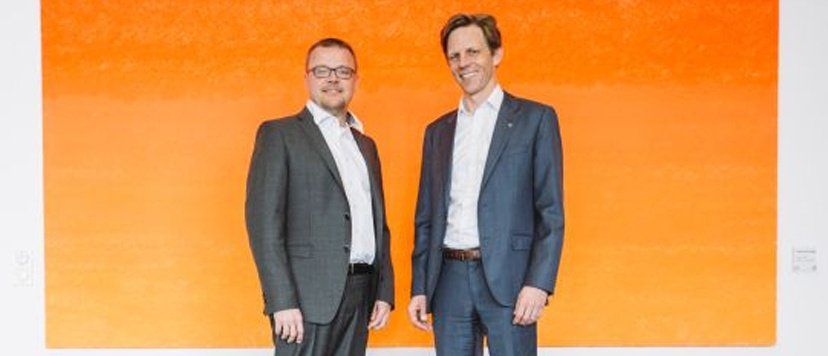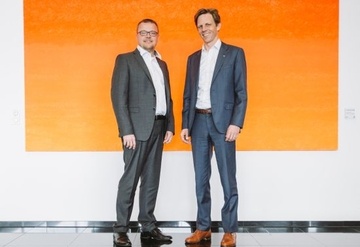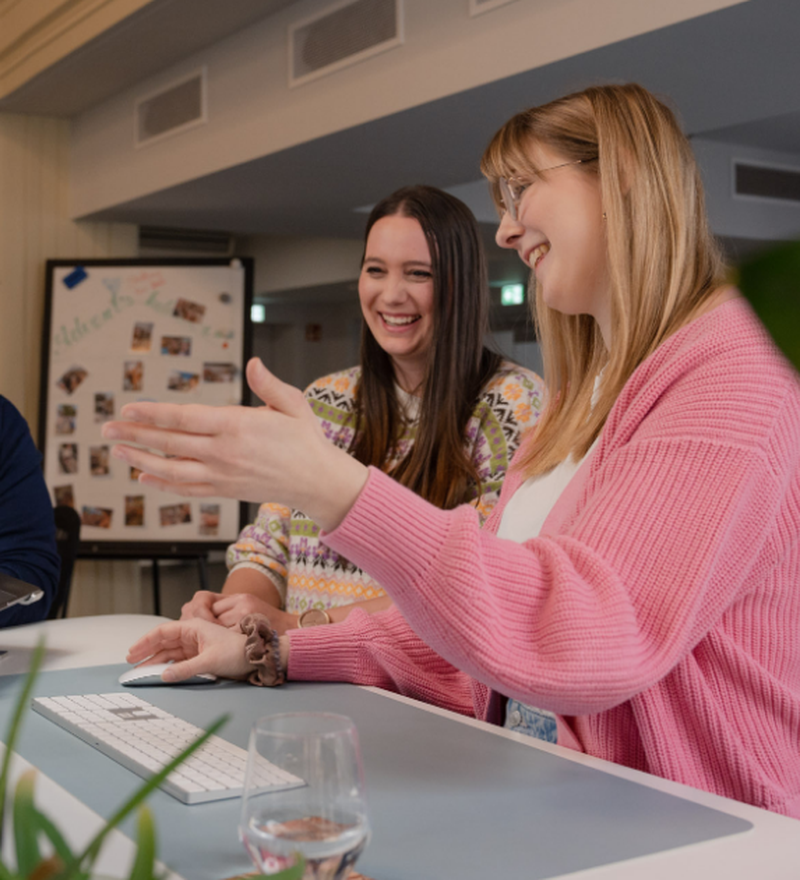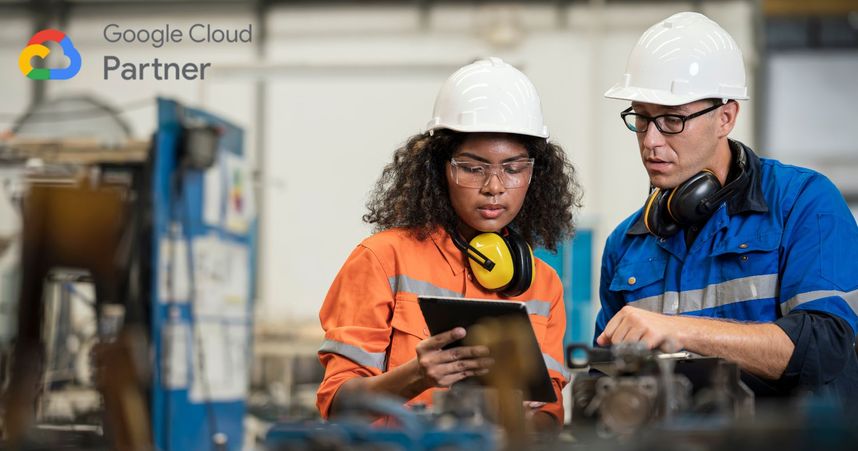An Internal Communications App from Staffbase for a World-Leading Heating and Solar Manufacturer
Viessmann Group, the international manufacturer of industrial heating and cooling systems, developed and introduced their employee app Vi2go in just a few weeks.

Head of Corporate Communications Albrecht von Truchseß and Head of Digital Communications Projects Carsten Lucassen talk about their decision to implement an internal communications app; reaching employees without computer access; and the cultural shift brought on by digitalization at the Germany-based company.
More Transparency. Fewer Gaps in Communication.
 Screenshots (c) App/Vi2Go
Screenshots (c) App/Vi2Go
Be it photos or explanatory videos, our employees receive information practically in real time—and they react. Many company apps are standardized today, and the prices tend to depend on the size of the company.
So was the Management Forum the first customer test?
Von Truchseß: Indeed it was! And it garnered several possible responses that we were able to incorporate into our next developments. This encouraged us to aim for roll-out on February 1. We knew a lot could go wrong, but the deadline was set. We wouldn’t mind taking out a function or making it less fancy—as long as the app went live on February 1.
These were start-up thoughts that we’ve transferred to several other projects since then. The first 2,000 downloads came quickly, and several people from abroad are also opting in despite not speaking any German.
Did you track the first 2,000 downloads?
Lucassen: We did, though the data is distorted, seeing as we started later for non-desk employees. The first 2,000 downloads came quickly, though we were actually happier about the downloads that followed. Since February 1, we’ve been seeing a slower increase in downloads, though we still see 10 to 20 new users daily.
We’re not advertising the app. Instead, employee curiosity is piqued when they notice their colleagues have got their hands on new technology. Some were skeptical about using their personal phones or tablets, saying “I’m not great with apps.” But then they realized their colleagues were more in the loop thanks to the app.
We could be radical and stop doing printed publications right away, but we’re not keen on that idea. In order for the app to be accepted, it’s crucial that employees feel confident and that they have alternatives.
We meticulously examined data security beforehand, and we don’t track any GPS data, for instance. After all, I wouldn’t use an app if I wasn’t sure it was secure. Anyone who’s still concerned about security can use the app on their PC.
How big is your team?
Von Truchseß: We have just over a dozen employees covering three areas: Classic Corporate Communication, Strategic Association Work, and Sustainability. Our subsidiaries and foreign subsidiaries all have their own contacts, and we keep in close contact with them.
 Carsten Lucassen and Albrecht von Truchseß in the state-of-the-art Viessmann company headquarters in Allendorf. Photo (c) Julia Nimke
Carsten Lucassen and Albrecht von Truchseß in the state-of-the-art Viessmann company headquarters in Allendorf. Photo (c) Julia Nimke
Do you think in terms of themes or channels?
Von Truchseß: We don’t differentiate between internal and external communication. Instead, the work we do depends heavily on the project, and we frequently work in teams from various parts of the company. A silo mentality won’t get you anywhere.
Are communication and marketing separate in your company?
Von Truchseß: Yes, but the two departments work closely together. There are, however, key differences: channels are one thing, but the messages are a different kettle of fish depending on whether I’m advertising and getting the products across as a brand or whether I’m getting the company across as a brand.
Do you need a lot of leeway in terms of budget?
Von Truchseß: We do need substantial leeway, though not in terms of budget. This is because we’ve started small and we have a start-up mentality, meaning we want to achieve as much as we possibly can with as little as possible. Then, if we fail, we can handle it. That’s because we haven’t come up with a gigantic app after a number of analyses and two years of development. We wouldn’t do it again any differently.
Lucassen: It also makes for quicker, modular development. If something doesn’t work, I don’t have to double back. Instead, I can just pause for a bit and quickly move on. In that sense, we can’t really talk about an overall budget, but rather just individual elements.
What content is coming out next?
Lucassen: We’re continuing to develop the app into a digital information and communication hub. We’ve integrated idea management, for example, with 100,000 suggested improvements a year. Then there’s Viessmann Selection, which is our merchandising shop. Both previously had their own apps that we’ve now been able to integrate.
The next stages of development involve integrating our job portal and establishing a public area that contains information and content for end customers and market partners.
Do you need to be brave to hand over control?
Von Truchseß: The fact of the matter is that we haven’t been able to control some communication for a while already—companies only have to look at how many Facebook pages and Facebook groups there are that bear their name. When you simply take a glance at the things employees are organizing all over the Internet, it’s staggering. Not to mention the customers. Those who are still afraid of loosening the reins on communication fail to see that it’s been like that for a long time already.
What were the technical challenges?
Lucassen: It wasn’t the app itself, but rather the interface. In other words, the link between the app, Viessmann IT, and our employees. The app is on an external server, and the provider is practically responsible for everything until we get to the factory entrance itself, which is where we take over.
Without being part of the Viessmann environment, the app needs to be able to recognize whether someone is our employee or not. So, it asks our IT whether someone works here, and it gets a token that says either “yes” or “no.”
In other words, the virtual factory entrance is the interface. New employees get access automatically, but we have to make sure that employees who leave can’t just stand outside the factory and communicate with the app.
That surely requires a sophisticated system for identifying permissions and roles, doesn’t it?
Lucassen: It certainly does. We have users, editors, managing editors, and administrators. We also have various user groups that may be regional. The Hof, Berlin, and Mittenwalde sites now also have their own news channels. We’re also planning to launch the app in Finland and Hungary.
Do you have a universal content management system for all your sites?
Von Truchseß: Indeed we do because, all spontaneity aside, it’s important to take scalability into account from the very outset, ensuring there’s room for improvement in every area. If you have to consider everything in advance, you’re dumbfounded. But we don’t actually write in Finnish ourselves, so instead we provide on-site employees with the toolbox. That way employees won’t expect to suddenly encounter a technological blockade seeing as they’ll be starting from scratch. So the good news is we can definitely make rapid progress.
How much does that cost?
Von Truchseß: The app is a subscription model (depending on the number of users), but it’s still far less expensive than printed publications.
Isn’t it a problem then that the more successful the app, the more expensive it gets?
Von Truchseß: That’s the kind of problem we’d like to have. The more successful the project, the more willing management will be to lend its support. Don’t forget that.
What have you discovered now that you’ve had the app for a while?
Von Truchseß: You don’t need dozens of strategy meetings or loads of project management in order for communication to blossom. Sometimes, all you need are simple resources in order to launch a new tool. But when you design this tool, you have to focus on the people who will use it—and you need to integrate them in the planning. Not only does this strengthen employee commitment, but it also fosters digital transformation in general.
The original interview was conducted by Hilkka Zebothsen for the magazine Pressesprecher. English translation by Robert Grover.









